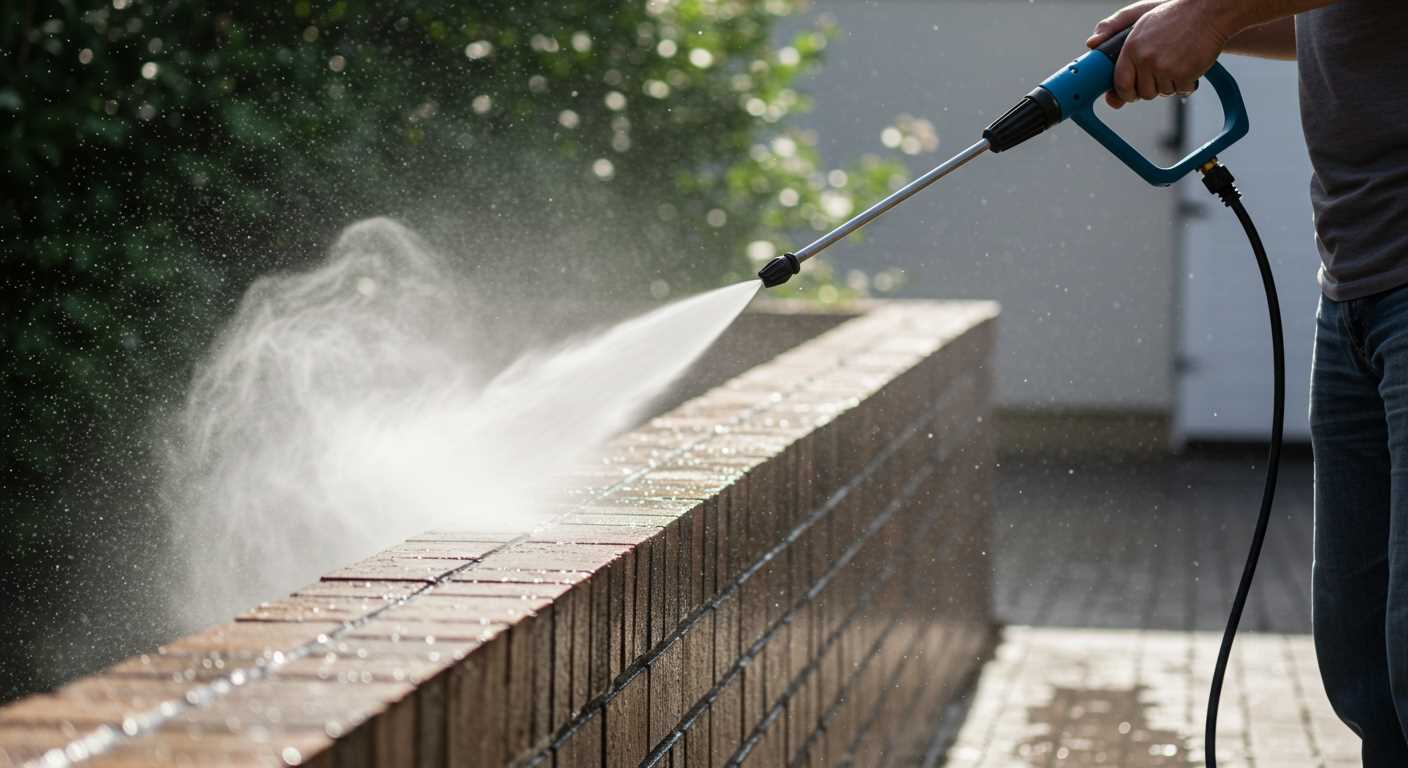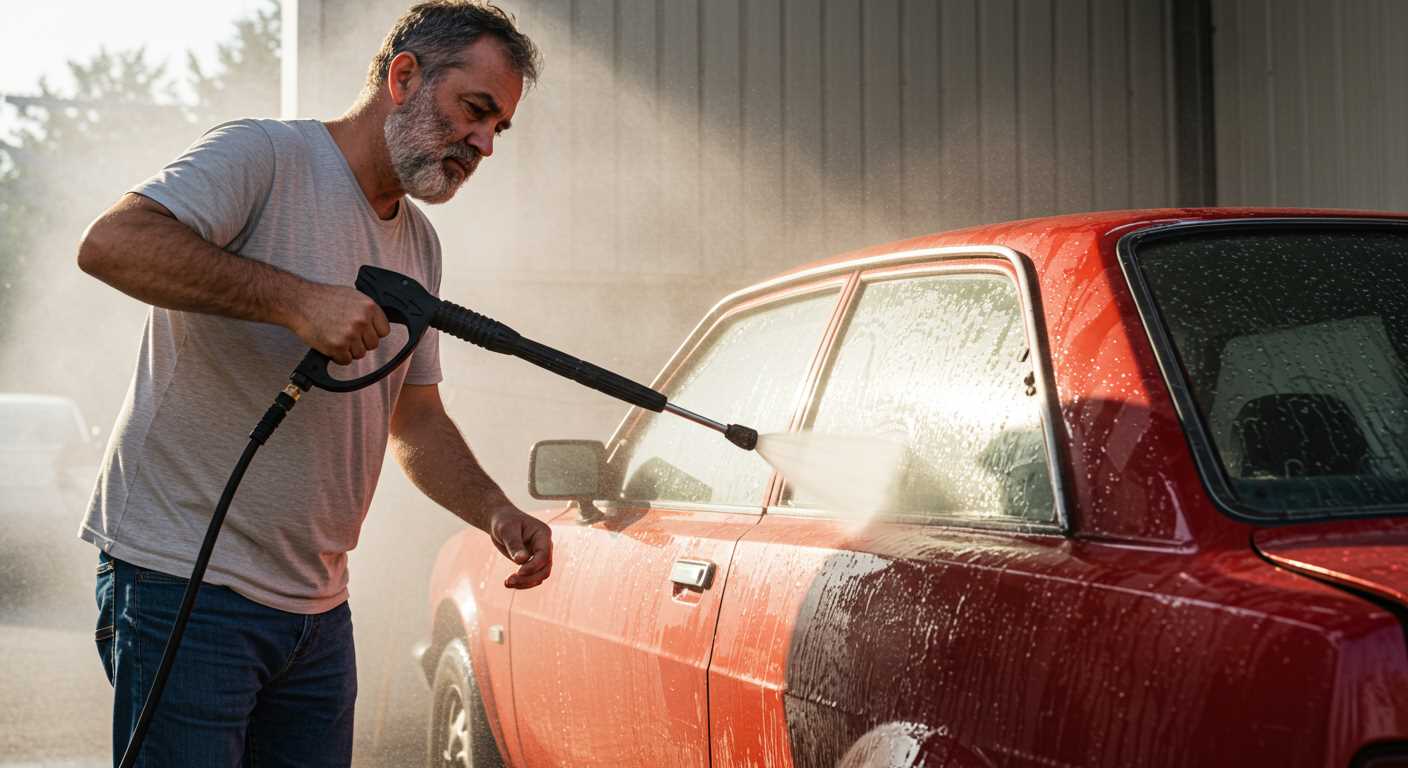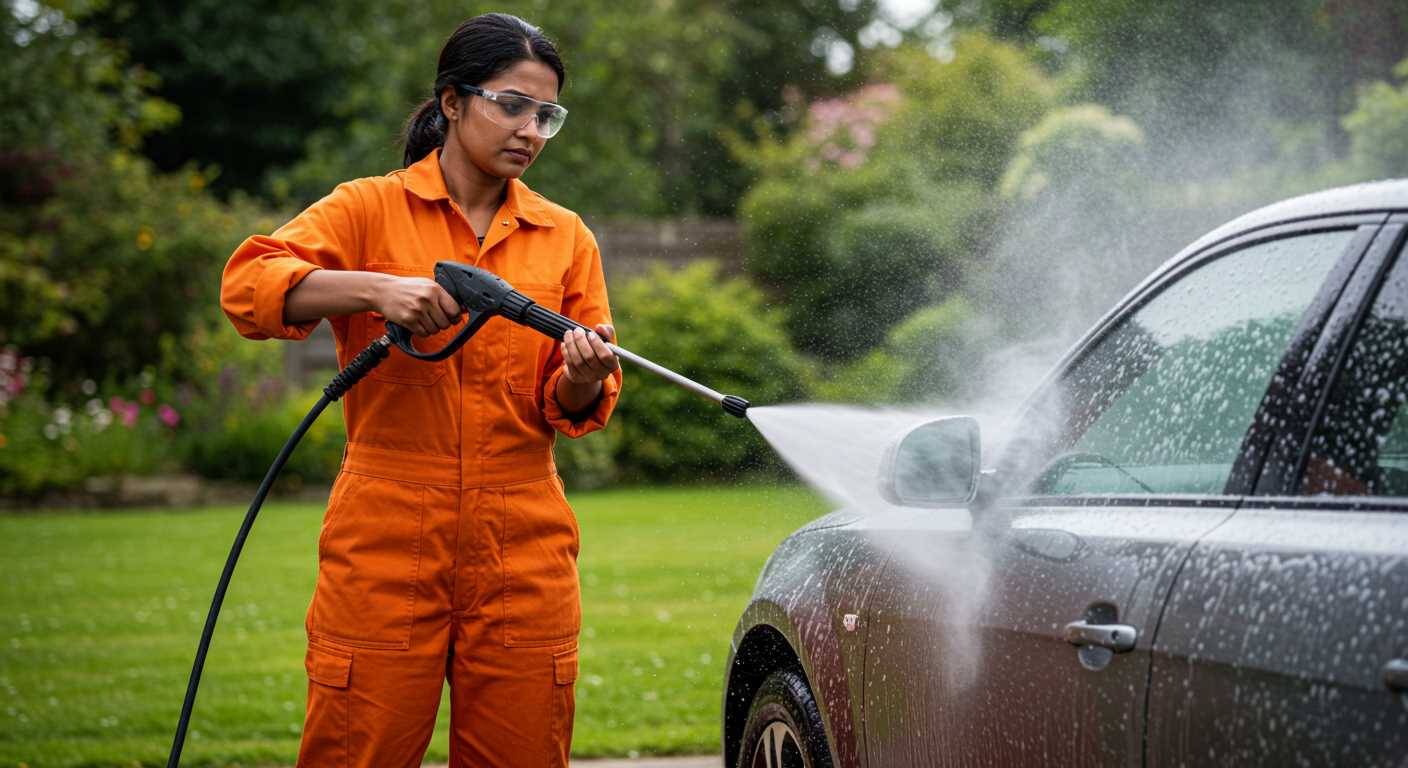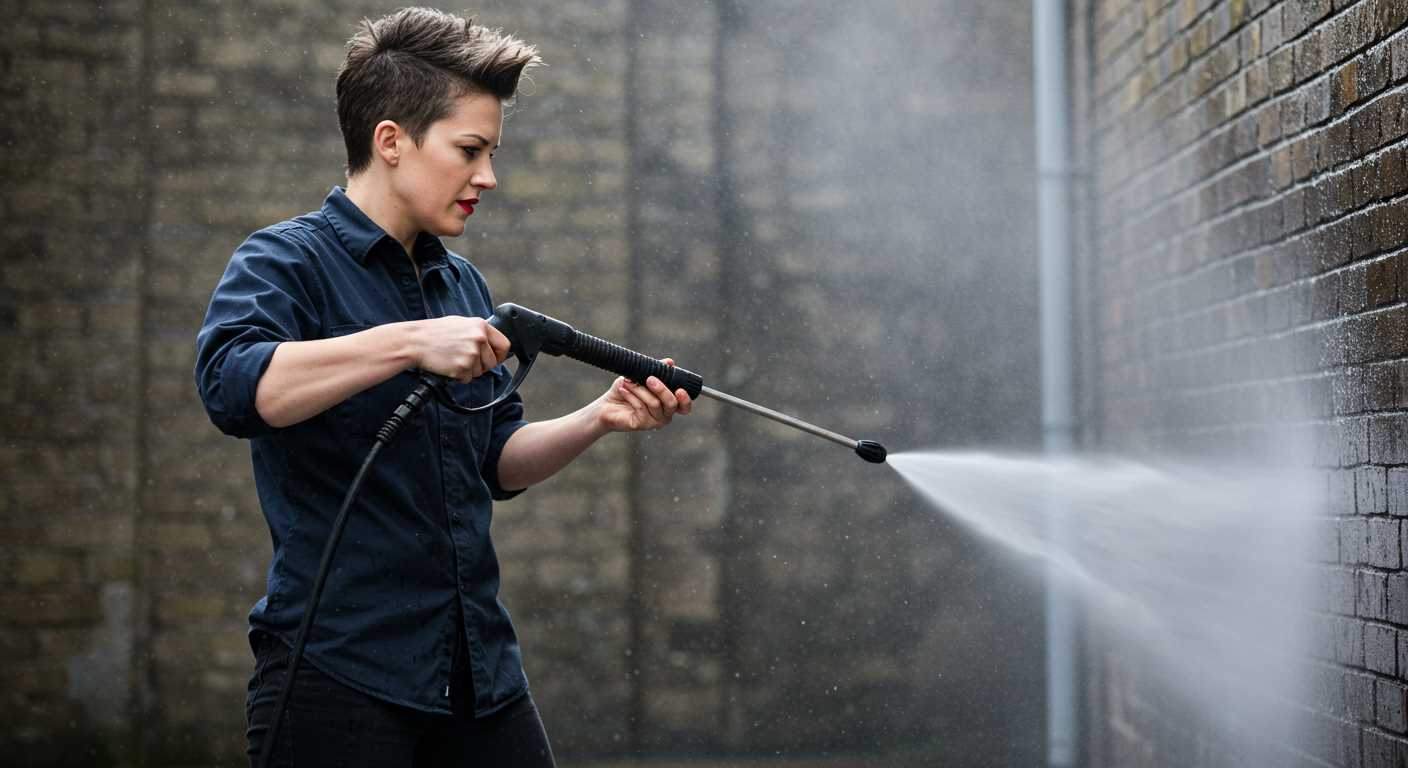



To begin, disconnect the device from the power source. Safety first; ensure you won’t accidentally trigger the machine during the process. Next, locate the quick-release mechanism on the lance, which typically involves a simple pull or twist action. This design allows for easy attachment and detachment, streamlining your transition between different nozzles.
After removing the existing attachment, take a moment to examine your new nozzle. Each variation serves a specific function, so refer to the manufacturer’s guidelines to select the right one for your task. Securely fit the new accessory onto the lance, ensuring a tight connection to prevent leaks during operation.
Reconnect the high-pressure cleaning unit to the power supply and conduct a brief test to verify that everything functions correctly. Adjust the spray pattern as needed, and you are ready to tackle your cleaning project with enhanced efficiency. This straightforward procedure can significantly improve the versatility of your equipment.
Identifying the Correct Wand Type for Your Pressure Cleaner
Check the manufacturer’s specifications in the user manual or on the website to determine the compatible nozzle for your equipment. Different models may require specific types, such as quick-connect or threaded fittings.
Inspect the existing attachment. Note the shape of the connection point and the locking mechanism, if present. Familiarity with these features can help vastly in finding the right replacement.
Assess the intended use of the hose accessory. If it’s for heavy-duty tasks, opt for an option that supports higher pressure levels. For light cleaning, a standard model suffices.
Consult compatibility charts or guides specific to your brand. Many manufacturers provide these resources to narrow down choices based on model numbers. This reduces the risk of obtaining an incompatible part.
Engage with user forums or online communities. These platforms often have insights from others who have faced similar challenges, sharing specific product recommendations based on real experiences.
Finally, consider your local retailer’s support. Well-informed staff can assist by providing guidance based on your current setup and needs, ensuring the selected part aligns with your device’s performance criteria.
Gathering necessary tools for wand replacement
.jpg)
To proceed with replacing the attachment on your cleaning device, ensure you have the following tools on hand:
- Wrench set: Choose an adjustable wrench or socket set suitable for your equipment’s fittings.
- Screwdriver: A Phillips or flat-head screwdriver may be necessary for removing any screws securing the attachment.
- Plumber’s tape: This tape helps create a watertight seal when connecting the new tool, preventing leaks.
- Cleaning cloth: Use a lint-free cloth to wipe down connectors and fittings, ensuring a clean fit.
- Safety gloves: Protect your hands during the process, especially when handling the attachment and any sharp edges.
Optional tools

If your model requires additional steps, consider having these on standby:
- Pliers: Handy for gripping tight fittings.
- Utility knife: Useful for trimming any excess tape or cleaning debris.
- Torque wrench: Ensures secure connections without over-tightening.
Checking that all tools are compatible with your specific model will save time and effort in the long run.
Safety Precautions Before Replacing the Nozzle
Ensure the power source is disconnected before starting any work. Unplugging the device eliminates risks related to electrical surges during maintenance.
Wear protective gear at all times. This includes safety goggles, gloves, and sturdy footwear. Suitable attire protects against potential water splashes and debris during the process.
Check for any residual pressure. Squeeze the trigger of the lance to release any trapped water within the system. This step minimises the chance of unexpected sprays.
Keep the work area clear. Remove any obstacles or items that could pose a tripping hazard while you are focusing on the equipment.
Make sure to secure the unit on a stable and flat surface. This helps to avoid accidental tipping or rolling, which could lead to injury.
Consult the manufacturer’s manual for specific warnings and instructions related to your model. Each design may have unique features that require attention before proceeding.
| Precaution | Description |
|---|---|
| Power Disconnection | Unplug the device to prevent electrical issues. |
| Protective Gear | Wear goggles, gloves, and proper footwear. |
| Residual Pressure | Release trapped water by squeezing the trigger. |
| Clear Area | Remove obstacles to prevent tripping hazards. |
| Stable Surface | Ensure the equipment is on a flat, stable surface. |
| Consult Manual | Review specific warnings and instructions for your model. |
Steps to Remove the Old Wand from the Pressure Cleaner
To detach the old nozzle, follow these precise steps to ensure safety and efficiency.
- First, switch off and unplug the equipment. This is crucial to avoid accidental activation.
- Release any built-up pressure. Squeeze the trigger of the gun until no water escapes, ensuring a safe environment for removal.
- Locate the connection point where the cleaning tool attaches to the main unit. This is typically at the front of the gun.
- Examine the locking mechanism. Depending on the model, there could be a simple twist-lock or a quick-release button.
- If there’s a locking collar, twist it counter-clockwise until it loosens. If your model features a quick-release button, squeeze it while pulling the nozzle away from the gun.
- Carefully pull the cleaning instrument straight out from the connector. Ensure you do not apply excessive force to prevent damage.
- Inspect the connection point for any debris or damage. Clean if necessary to prepare for the new attachment.
Following these guidelines will facilitate a smooth disconnection, allowing you to proceed with your replacement task effectively.
Installing the new wand and securing connections

Align your newly acquired cleaning tool with the trigger assembly on the unit. The connection point must fit snugly for optimal performance. Apply moderate pressure to insert it until a distinct click is heard, indicating it is securely locked in place.
Check the attachment closely to ensure there are no gaps between the wand and the assembly. Any slight misalignment could lead to leaks, compromising efficiency during use.
Finalising the setup
Once attached, perform a brief inspection of the locking mechanism. If available, engage any locking features to further secure the connection. This added layer of safety prevents accidental detachment while operating.
Testing for leaks
Before commencing a full cleaning session, run the unit briefly. Monitor the newly fitted component for leaks or unusual vibrations. If any issues arise, shut the system down immediately and recheck the connections to ensure a proper fit.
Testing the New Nozzle for Proper Functionality
After installation, I recommend performing a functionality check on the new attachment. Begin by ensuring the machine is disconnected from the power source, and water is not flowing through it. With the unit still off, inspect all connections to confirm they are secure and properly aligned.
Reconnect the water supply and attach the power source. Turn on the appliance, but keep the nozzle directed away from surfaces to avoid unnecessary spraying. Activate the trigger to check for any leaks around the joint areas. If water escapes, re-evaluate the fittings and tighten as needed.
Next, test the flow and pressure by directing the nozzle towards a suitable area, like a driveway or patio. Observe the spray pattern for even coverage and consistent force. If the stream appears erratic or the pressure is weak, further adjustments may be necessary. Refer back to the user manual for any specific calibration steps required for this model.
If adjustments yield unsatisfactory results, double-check that the nozzle is compatible and that no debris is obstructing its pathways. A clean filter is essential for optimal performance. After confirming everything is functioning correctly, you’re ready to tackle cleaning tasks with confidence.
Maintaining Your Pressure Cleaning Tool for Longevity

Regular inspection of the nozzle is key; ensure there are no clogs or damage. Clean the nozzle after each use to prevent buildup of dirt or debris, which can hinder performance and lead to wear.
Inspect O-rings and seals periodically for signs of wear or cracking. Replace them promptly to maintain a tight connection and prevent leaks, which can cause loss of pressure and damage over time.
Routine Care Tips

Store your equipment in a dry place to prevent rust and corrosion. If possible, hang the wand on a hook or pegboard to avoid bending or kinking the hose. Avoid exposing equipment to extreme temperatures for extended periods.
Maintain proper water supply filters to prevent impurities from entering the system, enhancing both performance and equipment lifespan. Use only manufacturer’s recommended chemicals and detergents to avoid damage to components.
Winter Storage Advice
Before winter, drain all water from the unit and hoses to avoid freezing, which can damage internal components. Consider using a pump protector, an antifreeze solution specifically designed for this purpose. Keep all accessories in a dedicated storage bag to prevent loss and ensure easy access for future tasks.
FAQ:
What tools do I need to change the wand on a pressure washer?
To change the wand on a pressure washer, you will typically need a few basic tools. Most importantly, you will need a new wand that is compatible with your specific pressure washer model. Additionally, having a pair of pliers can be helpful for loosening any tight fittings. A flat-head screwdriver might also be useful for removing any locking clips. Finally, it’s a good idea to have a towel or cloth handy to catch any water that may leak when you disconnect the wand.
Can I change the wand on my pressure washer myself, or should I hire a professional?
Changing the wand on your pressure washer is generally a straightforward task that many users can complete on their own. If you follow the manufacturer’s instructions carefully, you should be able to remove the old wand and attach the new one without professional help. However, if you are unsure about the process or do not feel comfortable doing it, hiring a professional may be a reasonable choice. Assess your comfort level with DIY repairs and proceed accordingly.
How do I know if I need to replace the wand on my pressure washer?
If you notice a decrease in pressure during use, or if there are visible damages to the wand, such as cracks or leaks, it may be time for a replacement. Additionally, if the connection between the wand and the pressure washer is loose or if the wand does not fit securely anymore, replacing it can help restore the performance of your machine. Signs of corrosion or persistent issues when using attachments also indicate it’s prudent to consider a new wand.







